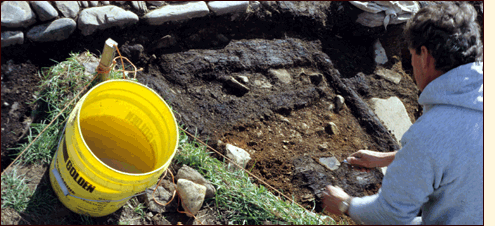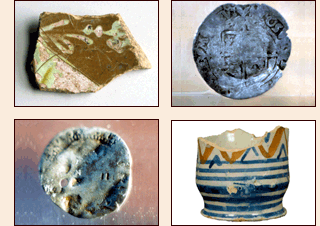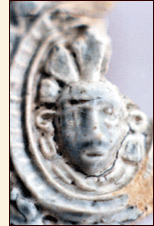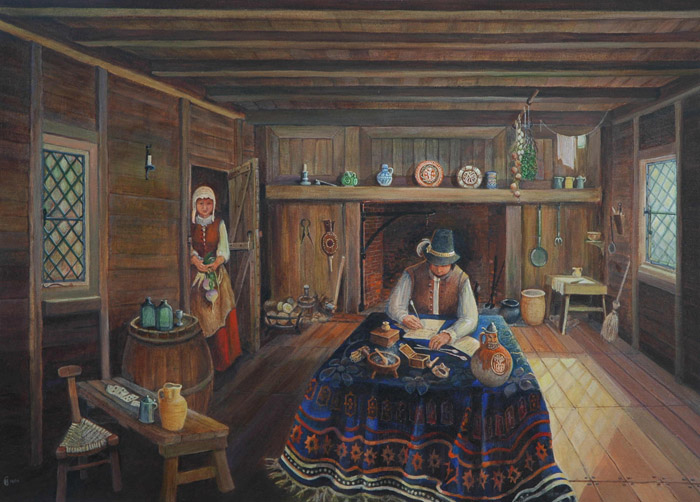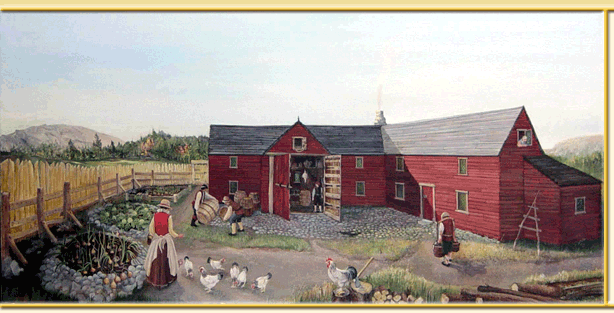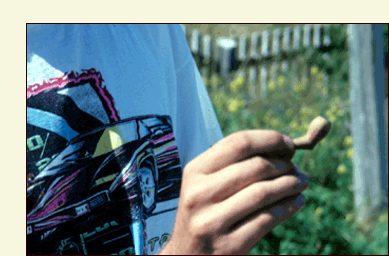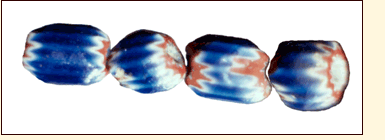|
Among the artifacts recovered were fragments from at least two Werra Slipware vessels manufactured in Germany between 1590 and 1625; shards from several North Italian Sgraffito vessels made between 1575 and 1625, probably in Pisa; a tin-glazed apothecary jar made sometime between 1580 and 1640; clay tobacco pipes manufactured in London between 1590 and 1610; fragments of a Raeren jug made in Belgium around 1600; a well worn James I silver tuppence minted in either 1603 or 1604; and an Elizabethan silver four pence (or groat) minted between December 1560 and October 1561.
Over 600 glass beads, generally referred to as trade beads, have also been recovered from the site. These beads are significant because we know that the colonists at Cupers Cove were making a concerted effort to establish a fur trade with the Beothuk Indians who lived 18 miles to the west in Trinity Bay. Documents survive requesting that such beads be sent to the colony. For example, in the winter of 1619/1620 Thomas Rowley asked that "hatchets, looking glasses, beads, a drum and shoemakers' thread" be sent to Cupids Cove as "truck" for the Native people.
Perhaps even more significant than the glass beads is an amber bead found just north of the storehouse. John Guy mentions in his journal that he had amber beads and that he carried some with him on his voyage into Trinity Bay in 1612. Such beads are extremely rare on archaeological sites and, while we may never know for certain, it is possible that this is one of the amber beads mentioned by Guy.
|



